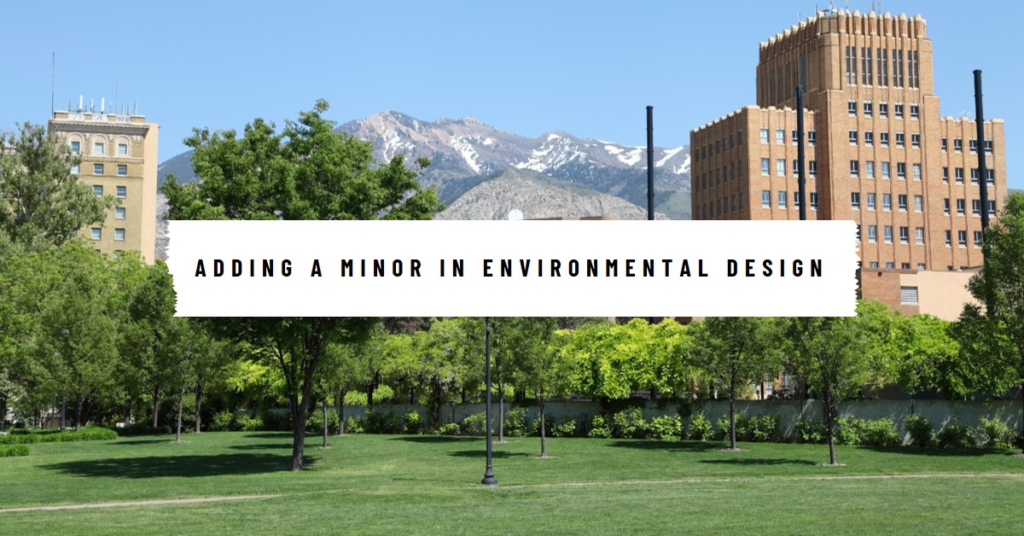
Table of Contents
- Introduction: Embracing Environmental Design
- The Essence of Environmental Design
- Why Choose CU Boulder for Environmental Design?
- Building a Sustainable Future: Curriculum Highlights
- Enhancing Career Prospects
- Interdisciplinary Collaboration: A Key to Success
- Beyond the Classroom: Experiential Learning Opportunities
- Networking and Professional Development
- Sustainability in Action: Campus Initiatives
- Conclusion: Shaping a Better Tomorrow
Introduction: Embracing Environmental Design
In the ever-evolving landscape of higher education, students are continually seeking ways to enhance their academic profiles and broaden their career prospects. One such avenue is adding a minor in Environmental Design at the University of Colorado Boulder (CU Boulder). This minor offers a unique opportunity to delve into the principles of sustainable design, urban planning, and environmental stewardship. In this blog post, we will explore the multifaceted benefits and practical applications of pursuing a minor in Environmental Design at CU Boulder.
The Essence of Environmental Design
Environmental design is an interdisciplinary field that integrates architecture, landscape architecture, urban planning, and environmental science. It aims to create functional, sustainable, and aesthetically pleasing environments. By studying Environmental Design, students learn to address complex challenges such as climate change, urbanization, and resource management. This minor equips students with the skills to design spaces that are not only visually appealing but also environmentally responsible.
At CU Boulder, the Environmental Design minor offers a comprehensive curriculum that covers a wide range of topics. Students engage with courses on sustainable design practices, green building technologies, and urban planning. Additionally, the program emphasizes hands-on learning through studio courses and real-world projects, providing students with practical experience in the field.
Why Choose CU Boulder for Environmental Design?
CU Boulder stands out as a premier institution for studying Environmental Design due to its commitment to sustainability and innovation. The university’s College of Environmental Design is renowned for its cutting-edge research and state-of-the-art facilities. Students have access to world-class resources, including the Environmental Design Fabrication Lab and the Visual Resource Center.
Moreover, CU Boulder’s location offers a unique advantage. Nestled at the foothills of the Rocky Mountains, the campus provides a stunning backdrop for studying environmental design. The region’s diverse landscapes and progressive urban development serve as a living laboratory for students to explore and apply their knowledge.
Building a Sustainable Future: Curriculum Highlights
The curriculum for the Environmental Design minor at CU Boulder is thoughtfully designed to provide a well-rounded education. Core courses introduce students to fundamental concepts such as environmental ethics, sustainable urbanism, and ecological design principles. These foundational classes lay the groundwork for more specialized studies in areas like green infrastructure and environmental impact assessment.
One of the highlights of the program is the emphasis on studio-based learning. Students participate in design studios where they work on real-world projects, from designing sustainable buildings to planning eco-friendly communities. This hands-on approach fosters creativity and practical problem-solving skills, essential for a successful career in environmental design.
Enhancing Career Prospects
Adding a minor in Environmental Design can significantly enhance a student’s career prospects. The skills acquired through this program are highly sought after in various industries, including architecture, urban planning, and environmental consulting. Employers value candidates who can combine technical expertise with a deep understanding of sustainable practices.
Graduates with a background in environmental design are well-equipped to tackle pressing global challenges. They can pursue careers in designing green buildings, developing sustainable urban plans, and creating policies for environmental conservation. The interdisciplinary nature of the field also opens doors to roles in academia, research, and public policy.
Interdisciplinary Collaboration: A Key to Success
One of the unique aspects of studying Environmental Design at CU Boulder is the emphasis on interdisciplinary collaboration. The program encourages students to work with peers from diverse academic backgrounds, fostering a holistic understanding of environmental issues. This collaborative approach is vital for addressing complex problems that require multifaceted solutions.
Students often participate in joint projects with other departments, such as engineering, environmental science, and business. These collaborations provide a broader perspective and enhance the ability to develop innovative solutions. By working together, students learn to communicate effectively, think critically, and approach challenges from multiple angles.


Beyond the Classroom: Experiential Learning Opportunities
CU Boulder’s Environmental Design minor extends beyond traditional classroom learning. The program offers numerous opportunities for experiential learning, including internships, field trips, and community projects. These experiences enable students to apply their knowledge in real-world settings and gain valuable insights into the practical aspects of environmental design.
Internships are a key component of the program, providing students with hands-on experience in professional environments. CU Boulder has established partnerships with leading firms and organizations in the field, offering students a chance to work on impactful projects. Additionally, field trips to sustainable developments and eco-friendly communities provide firsthand exposure to successful environmental design practices.
Networking and Professional Development
Networking and professional development are crucial elements of the Environmental Design minor at CU Boulder. The program hosts regular events, such as guest lectures, workshops, and industry panels, where students can interact with professionals and alumni. These events provide valuable opportunities to build connections, gain industry insights, and stay updated on the latest trends in environmental design.
The College of Environmental Design also offers career services, including resume reviews, interview preparation, and job placement assistance. These resources support students in their transition from academia to the professional world. By leveraging these opportunities, students can enhance their career readiness and increase their chances of securing rewarding positions in the field.
Sustainability in Action: Campus Initiatives
CU Boulder is a leader in sustainability, and the campus itself is a testament to the principles of environmental design. The university has implemented numerous initiatives to reduce its carbon footprint, promote energy efficiency, and foster a culture of sustainability. Students in the Environmental Design minor have the opportunity to contribute to these initiatives and see sustainable practices in action.
From LEED-certified buildings to innovative waste reduction programs, CU Boulder’s campus serves as a living laboratory for environmental design students. By participating in campus sustainability projects, students can gain practical experience and make a tangible impact on their community. These initiatives also inspire students to incorporate sustainable practices into their future careers.
Conclusion: Shaping a Better Tomorrow
In conclusion, adding a minor in Environmental Design at CU Boulder is a strategic decision that offers numerous benefits. The program provides a comprehensive education in sustainable design, equips students with valuable skills, and enhances career prospects. With its emphasis on interdisciplinary collaboration, experiential learning, and professional development, the Environmental Design minor prepares students to address the environmental challenges of today and tomorrow.
By choosing CU Boulder, students gain access to world-class resources, a supportive academic community, and a vibrant environment for learning and growth. Whether you are passionate about creating sustainable cities, designing green buildings, or conserving natural resources, the Environmental Design minor at CU Boulder can help you achieve your goals and make a positive impact on the world.



